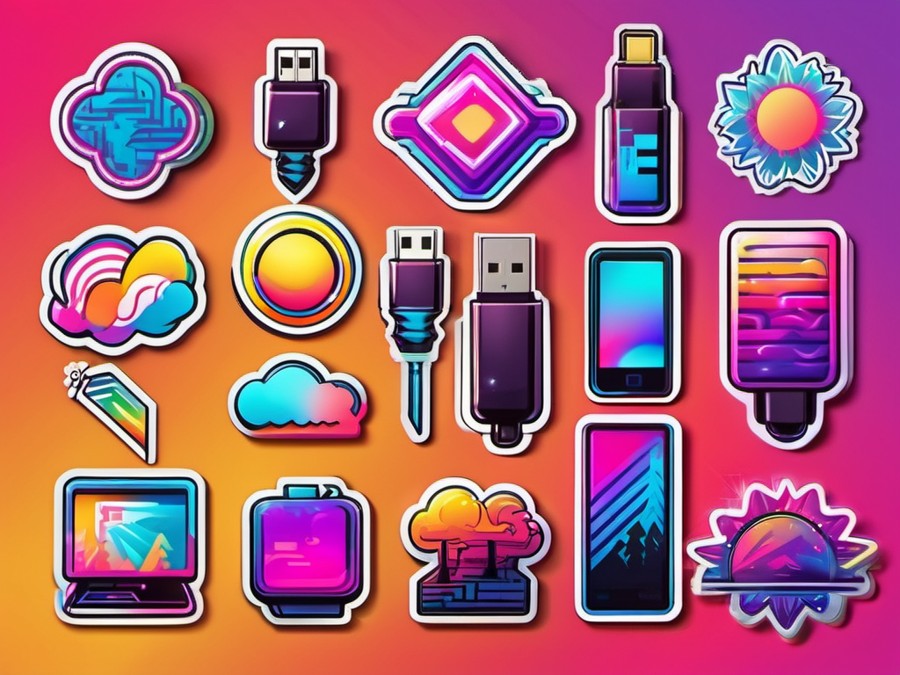· Charlotte Will · Computer Cable Adapters · 7 min read
What is a USB-C to VGA Adapter?
Discover the power and versatility of USB-C to VGA adapters. Connect your modern devices to older monitors and projectors seamlessly. Learn about the benefits, troubleshooting tips, and real-world applications of these essential adapters.

Welcome to the future of connectivity! Ever wondered what a USB-C to VGA Adapter is and why it’s so useful? Well, buckle up because we’re about to dive into this fascinating piece of tech.
Understanding USB-C: The Future’s Arrived
Let’s start at the beginning. USB-C, also known as Type-C, is a type of connector that’s become incredibly popular. Why? Because it’s tiny, versatile, and can do just about anything. From charging your phone to connecting it to an external monitor, USB-C is the Swiss Army knife of connectors. If you’re curious about how USB-C cables work, check out this article.
The Magic of USB-C
One of the best things about USB-C is its ability to support different protocols. This means that with the right adapter, you can use a USB-C port to connect just about anything—including networks. If you’re eager to learn more, this article dives into how USB-C network adapters can enhance your connectivity.
VGA: A Blast from the Past
On the other side of our adapter, we have VGA. Short for Video Graphics Array, VGA is an old-school video standard that’s been around since the ’80s. It might be showing its age, but it’s still used in plenty of projectors and older monitors. If you want to understand the history behind VGA and its significance, this article offers some insights.
Why VGA Still Matters
Despite its age, VGA is still relevant in many corporate and educational settings. Older equipment hasn’t caught up with the digital revolution yet, making VGA adapters a necessity. Whether you’re hooking up an old projector or simply need to connect your laptop to a legacy monitor, a USB-C to VGA Adapter can make all the difference.
The USB-C to VGA Adapter: Bridging the Gap
Think of a USB-C to VGA Adapter as a translator. It takes the digital signals from your USB-C device and translates them into analog signals that VGA can understand. It’s like teaching an old dog new tricks—just a bit more technical!
How It Works
At the core of this adapter is a tiny chip that converts digital data into analog signals. This conversion allows your USB-C device to communicate with older devices that only support VGA. For a deeper dive into how USB-C adapters work, check out this article.
Versatility in Action
A good USB-C to VGA Adapter can support various resolutions, ensuring compatibility with a wide range of devices. Most adapters will handle up to 1080p, which is more than enough for most presentations or gaming sessions. However, if you need higher resolutions, make sure to choose an adapter that supports them.
Why Use a USB-C to VGA Adapter?
You might be wondering, why bother with a USB-C to VGA Adapter when there are other options? Well, here are a few reasons:
- Compatibility: Let’s face it; not everyone has upgraded to the latest and greatest tech. A USB-C to VGA Adapter lets you connect with older systems without any fuss.
- Portability: These adapters are tiny and lightweight, making them perfect for on-the-go presentations.
- Versatility: A good USB-C to VGA Adapter can do more than just connect video. Some come with additional ports for charging or data transfer, making them a one-stop shop for connectivity.
The Benefits of Going Digital
While VGA is still widely used, digital connectors like HDMI and DisplayPort offer significant advantages. They support higher resolutions, longer cable lengths, and even audio transfer in some cases. However, if you need to connect to an older VGA device, a USB-C to VGA Adapter is your best bet.
How to Choose the Right USB-C to VGA Adapter
Not all adapters are created equal. When you’re shopping, look for these features:
- Resolution: Make sure the adapter supports the resolution you need. Most will handle up to 1080p, but check if you’re planning on going higher.
- Cable Length: Longer cables give you more flexibility, but they can also be bulkier. Find the right balance for your needs.
- Additional Ports: Some adapters come with extras like HDMI or USB ports. Consider what you need and choose accordingly.
- Build Quality: A good adapter should feel sturdy and well-made. Cheap ones can break easily, so invest in quality if you can.
Passive vs. Active Adapters
Most USB-C to VGA Adapters are passive, meaning they don’t require external power to work. However, if you need longer cables or higher resolutions, you might want to consider an active adapter. These adapters come with a chip that amplifies the signal, allowing for better performance over longer distances.
Troubleshooting Common Issues
Even the best adapters can run into problems. Here are a few common issues and how to fix them:
- No Display: Check all your connections. Sometimes, a loose cable can cause this problem. If everything is tight, try a different USB-C port on your device.
- Distorted Image: This could be a resolution issue. Make sure your adapter supports the resolution you’re trying to use. If it does, try a different cable.
- Adapter Overheating: This can happen if the adapter is drawing too much power. Try a different port or use a powered USB hub to solve this problem.
When to Contact Support
If you’ve tried all the troubleshooting steps and still can’t get your adapter to work, it might be time to contact the manufacturer’s support. They can provide further assistance and possibly replace your adapter if it’s defective.
When You Might Need an Active Adapter
Sometimes, a regular USB-C to VGA Adapter just isn’t enough. That’s where active adapters come in. These little powerhouses amplify the signal, letting you use longer cables or higher resolutions. They’re not cheap, but if you need the extra oomph, they’re worth it.
Powering Up
Active adapters require an external power source to function. This can be a USB port on your laptop or a dedicated power adapter. Just make sure you have the right setup before you start using an active adapter.
Real-World Applications: Where USB-C to VGA Adapters Shine
Let’s talk about some practical uses for these adapters. Imagine you’re giving a presentation at work, and the conference room has an old projector with only VGA inputs. A USB-C to VGA Adapter saves the day, letting you connect your laptop and wow the crowd with your slick presentation.
Gaming On-The-Go
Or maybe you’re a gamer, and you want to hook up your laptop to an old monitor for some late-night gaming sessions. Again, a USB-C to VGA Adapter makes it possible, turning your gaming setup into a portable powerhouse.
Educational Settings
Schools and universities are another place where these adapters shine. Older classrooms might still have VGA inputs for projectors, and a good USB-C to VGA Adapter ensures you can connect your laptop without any hassle.
FAQs: Your Burning Questions Answered
1. Can I use a USB-C to VGA Adapter with my MacBook?
Yes! Modern MacBooks use USB-C for most of their connectivity, so a USB-C to VGA Adapter works perfectly. Just make sure you get one that supports the resolution you need.
2. Will a USB-C to VGA Adapter work with my phone?
This depends on your phone. If your phone supports USB-C video output (most modern Android phones do), then yes, you can use a USB-C to VGA Adapter with it. iPhones, however, use a different connector (Lightning) and don’t support video output over USB-C.
3. I’m having trouble with my adapter. What should I do?
First, make sure everything is properly connected. If that doesn’t work, try a different USB-C port on your device or a different cable. If you’re still having issues, it might be time to look for a new adapter.
4. Can I use a USB-C to VGA Adapter with my Nintendo Switch?
The original Nintendo Switch uses a proprietary connector, so you’ll need a USB-C dock or adapter made specifically for the Switch. The newer Switch models, however, do use USB-C, so a regular adapter should work fine.
5. Why is my image distorted when using a USB-C to VGA Adapter?
This could be due to several reasons. Make sure your adapter supports the resolution you’re trying to use. If it does, try a different cable or port. Sometimes, the issue is with the device itself, not the adapter.
Conclusion
There you have it—the lowdown on USB-C to VGA Adapters. They might seem simple, but these little adapters pack a powerful punch when it comes to connectivity. Whether you’re giving a presentation or setting up a late-night gaming session, a USB-C to VGA Adapter is your ticket to connectivity heaven. So go on, embrace the future of tech—one adapter at a time!




